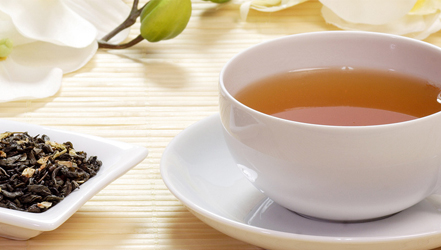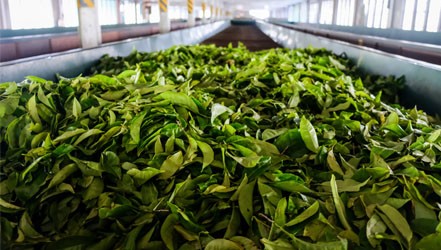Did you know that a single tea bag can release billions of plastic particles into your cup? That's right! On average, a tea drinker consumes about 5 grams of these harmful particles per week, which can cause long-term health issues. To combat this situation, Premier's has devised a solution! Our teas are properly cultivated and processed, ensuring that you don't consume plastic and artificial materials. Learn about Premier's tea processing techniques to understand how our teas are so pure, healthy, and delicious. Discover how our commitment to quality produces healthy and delicious teas.
Premier's Processing TechniquesAt Premier's Tea, our team is committed to bringing you the finest Indian tea leaves. This means eliminating unwanted and unsafe materials like dust, fibre, wooden splinters, stone, sand, glass, ferrous particles, paper, plastics, and even dead insects. It's natural that these get mixed in at tea plantations, but leaving them in the leaves before serving isn't in any way okay. Our facilities have state-of-the-art cleaning units imported from Japan to ensure that all of our leaves undergo Premier's stringent company cleaning processes. This unit cleans and processes all of our teas to ensure purity, safety, and flavour. However, even these high-end machines cannot possibly do everything required to make our teas live up to our purity standards. Our harvesters and processors must be careful during every step of the process from farm to cup so that leaves remain as pure and delicious as possible.
 Come oh come ye tea-thirsty restless ones - the kettle boils, bubbles and sings, musically.
Come oh come ye tea-thirsty restless ones - the kettle boils, bubbles and sings, musically.As you might imagine, the first step towards getting quality tea leaves is growing and plucking them. While many companies have turned to machine-picking leaves, this isn't a good way to ensure that you get high-quality tea. Because of this, Premier's only uses leaves that have been hand-picked in the appropriate climates. Hand-picking tea leaves ensure that the correct part of the bud will wind up in your cup rather than the small, flavorless plant ends. Harvesting tea leaves at the appropriate time of the year is also critical to obtaining fine tea. When you purchase tea, you likely have seen the labels 'first flush' or 'second flush' on the packaging. A flush is also called a harvest in some parts of the world. First flush tea is harvested in late winter to spring and is considered the best option. 'Second flush' tea is also delicious, however, and is plucked in the summer.
WitheringAfter the leaves that we sell have been plucked, they undergo a process called 'withering.' Basically, when raw tea leaves are picked and head off the be processed, it's only natural that they dry up a bit. Unlike you may expect, though, this is something that quality tea cultivators lean into. Leaves are laid out in a withering trough or mat and allowed to wilt even further under controlled temperatures and humidity levels. This process lowers the water content of the tea by half. This makes the later steps of tea processing easier.
OxidisingDry tea leaves are easier to oxidise. Enzymes released during the withering process break down compounds in the leaves such as proteins that don't need to be there. Exposure to oxygen in the air while withering triggers chemical reactions in the tea to make the profit fresher and more flavourful. Oxidation also is a huge factor in determining what type of tea you'll have for the final product. Depending on how oxidised the leaves are, the leaves will turn a dark brown to black color. Black teas like English Breakfast, Assam, and Darjeeling are fully oxidised, while green teas have virtually no oxidisation past the withering period. While there are other factors that determine what type of tea you'll end up with (Oolong leaves are, after all, different than those used for Darjeeling), oxidisaton does help in determining the flavour and caffeine content of the tea you will be consuming.
Heating Leaves Via FixationFixation is what stops oxidisation from continuing past the point where you want it to go. If not for fixation, there would be no such thing as the green teas that you love or the herbal teas that you drink at the end of a long day. This is done by heating up the tea leaves when they've been oxidised in the desired amount. The heat denatures the enzymes and stops them from becoming further oxidised. This happens to all teas except black varieties, which are already fully oxidised. After that, the tea will be dried of all remaining moisture. Usually, it will be laid out in the sun, but sometimes it will have wetness removed from it with roasters that give it an additional smoky flavour.
How Does This Benefit You?In addition to the health benefits of pure and untainted tea leaves, you will also get a much finer flavour with Premier's process than with other tea companies. We're committed to ensuring that each cup is rich and full-bodied. For our flavoured teas, we also use all-natural flavours that enhance and embolden the delicious black and green teas that we already offer. Whether you want peach infusion or Chai, you can expect the finest quality from us.








